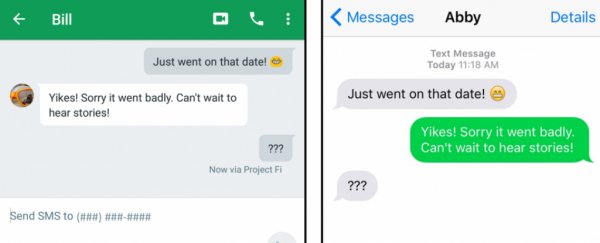There's no denying that we're all using emojis more and more in our daily lives - Oxford Dictionaries' 2015 word of the year was the "face with tears of joy" and even our parents are now incorporating the adorable images into their texting game.
But with linguists comparing emojis to Egyptian hieroglyphics and calling them a "new language" set to overtake the written word, are they actually helping us to communicate any better? According to a new study, the answer is not really. In fact, research shows we all use and perceive emojis in vastly different ways, opening up the potential for a whole lot of miscommunication.
To figure this out, a team from the University of Minnesota surveyed 304 people on what they thought the most popular, human-like emojis meant. The results showed that, 25 percent of the time, participants looking at the exact same emoji couldn't even agree on whether the image was positive, negative, or neutral in sentiment.
And things got even more confusing when participants considered the different ways emojis are rendered across platforms and phone types. For example, this is what the same grinning face looks like, depending on where you're seeing it:
 GroupLens
GroupLens
"Overall, we find significant potential for miscommunication, both for individual emoji renderings and for different emoji renderings across platforms," write the researchers.
In the survey, participants were asked to rate emojis on a sentiment scale from -5 (strongly negative) to 5 (strongly positive), and on average, there was a difference of 1.88 points, even when looking at the exact same emoji on the same platform.
Here's how people scored that "grinning face with smiling eyes" just based on the iPhone rendering:
 GroupLens
GroupLens
But when sending an emoji across platforms (for example, from an iPhone to a Nexus), there was on average a 2.04-point difference in perceived sentiment. And depending on the platform, people's descriptions of the grinning face ranged from "blissfully happy" to "ready to fight".
Which is pretty huge if you're trying to impart some more nuanced meaning into your text message. Case in point, this unfortunate exchange between Abby and Bill:
 GroupLens
GroupLens
The research might sound frivolous, but it's actually pretty important, considering the fact that emojis were partly designed to help us impart more meaning into the written word, which is already notoriously difficult to interpret.
For example, a 2005 study showed that people could only accurately identify emotions like seriousness or sarcasm in written text just 56 percent of the time. With voice recordings, that accuracy rose to 73 percent.
And now this new study suggests that we might actually be opening ourselves up to more confusion - not less - with our dependence on the unicode images.
But before you delete your emoji characters, it's worth noting that this study only considered the 25 most frequently used human-like emojis, so it doesn't provide any insight into love hearts, eggplants, and our favourite ghost emoji.
And not all emojis were as confusing as the grinning face - while the "loudly crying face" was equally prone to misinterpretation, the love heart eyes emoji was one of the most universally understood.
The research also relied on a relatively small sample size, and although the paper has been published and will be presented as part of the Association for the Advancement of Artificial Intelligence's 2016 conference on web and social media in May, it hasn't been peer-reviewed, so we need to take the findings with a grain of salt.
But the researchers are already planning how to expand on the work and hopefully find a way for emoji use to become a little more consistent for all of us.
"We're excited about continuing this work along a number of fronts: considering emoji in the context of full text messages, investigating emoji communication breakdowns for people from different national cultures, asking similar questions of non-anthropomorphic emoji, building systems to help test the potential for miscommunication in a new emoji rendering, and so on," writes one of the researchers, Hannah Miller.
"A number of scholars have argued that emoji represent a fundamental shift in language use," she adds. "As such, fully understanding emoji's role in human communication will be an important step in developing the next generation of language technologies."
